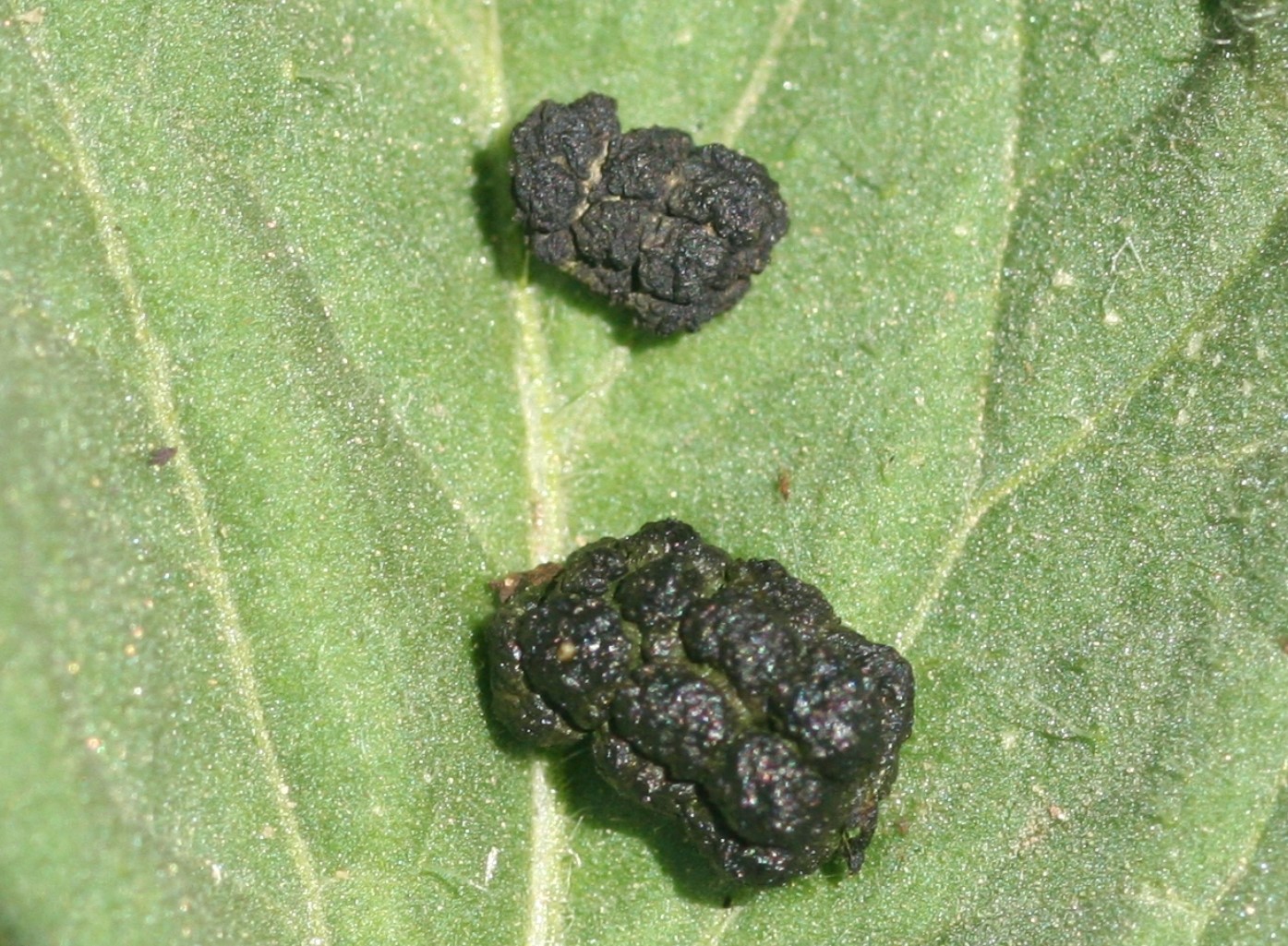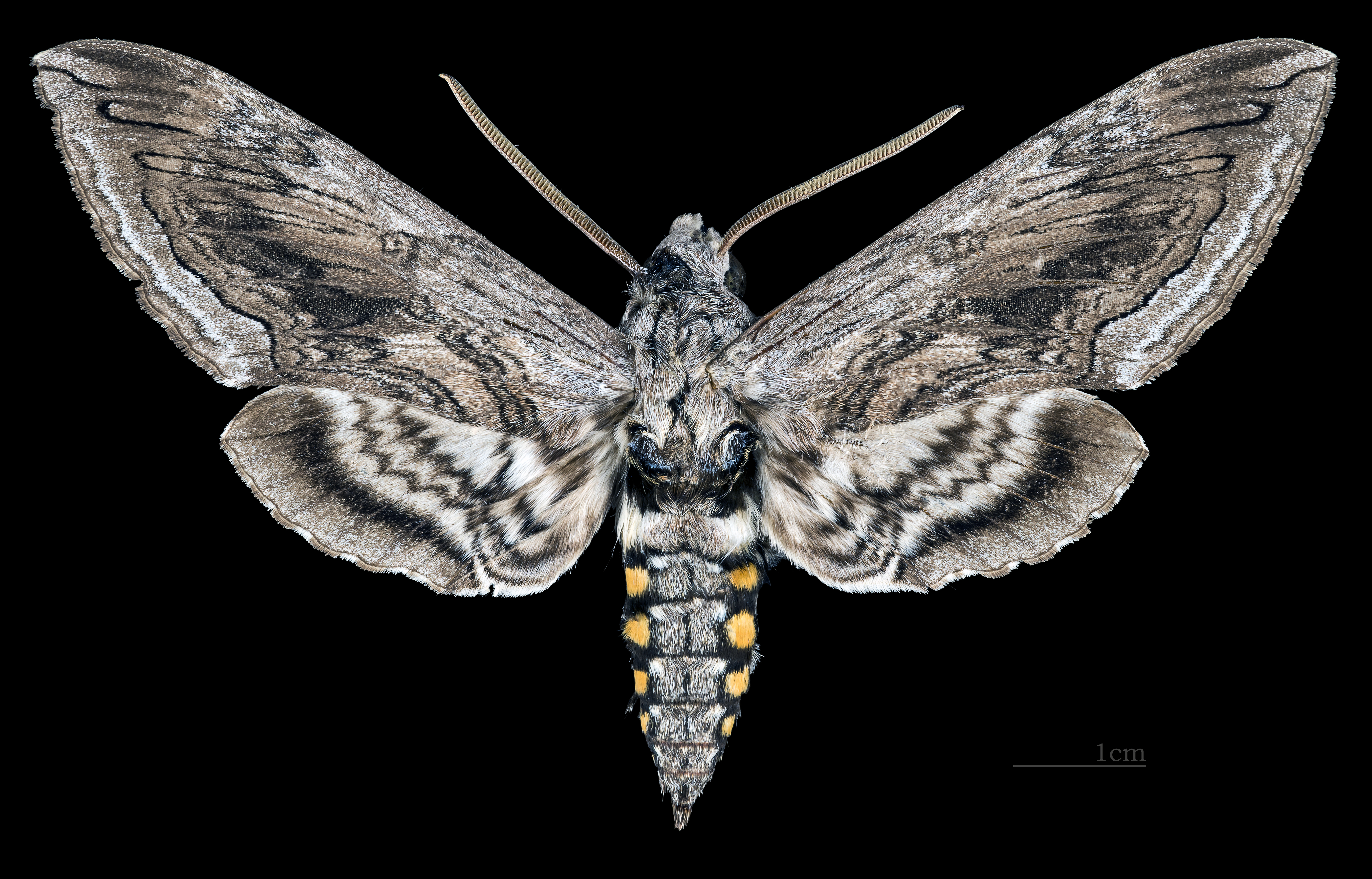 Sphinx Moths - July 21, 2021 Jeff Schalau, Agent, Agriculture & Natural Resources University of Arizona Cooperative Extension, Yavapai County Most gardeners have encountered a sphinx moth at one time or another. The tomato hornworm is a sphinx moth larva and any vigilant tomato grower has plucked a few of these hungry green caterpillars from their tomato plants. Others may have observed adult sphinx moths feeding on sacred datura, petunias, thistles, evening primroses, honeysuckle, verbena, salvia, Nicotiana, four-o-clocks, and other nectar producing flowers. Sphinx moths are also known as hawk moths and hummingbird moths. In southeastern Arizona, 49 species of sphinx moths have been collected. While I am not aware of any scientific data for our area, but I would guess we have at least 20 species. In general, the life cycle of sphinx moths is similar for most species. The pupae overwinter in the soil in a 1 ˝ to 2-inch-long brownish case. When handled under warm conditions, a pupa will often begin to move. These pupae are often brought to our Cooperative Extension offices for identification. Adults emerge in spring or early summer then mate and lay eggs on suitable host plants for their species. Upon hatching, larvae often initially feed in groups then become solitary as they mature. After feeding for 6-8 weeks, the larvae burrow into the soil to pupate. Some species of sphinx moths are known to have up to four generations per year. The number of generations varies by species, location, and climate. The tomato hornworm (Manduca quinquemaculata) and the tobacco hornworm (Manduca sexta) are both sphinx moths. The word “hornworm” describes the distinctive pointed structure on its tail. The tomato hornworm larva is green with diagonal white lines on the side of each segment that form L-shapes. The adults are large gray moths with a wingspan of five inches. They have four yellow-orange patches on each side of their abdomen. The tobacco hornworm is also found on tomatoes but has a red "horn" and straight diagonal stripes. The adult looks like the tomato hornworm. Both feed on tomatoes, peppers, and other Solanaceous plants. The larvae of each species can reach four inches in length. Crop damage is caused by feeding caterpillars. Experienced tomato growers monitor for damage and frass (droppings). The larvae are usually in the interior of the plant during daylight hours. Hand picking the larvae is the best control option for protection of home gardens. Additional caterpillar control is facilitated by various wasp and fly parasitoids. This is a good reason to limit pesticide use in your garden. Another common species in our area is the white-lined sphinx moth (Hiles lineata). The larvae of this species feed on a wide variety of native plants. The adult has distinctive pink patches on its underwings and is a very common visitor to flower gardens. During years when sphinx moth larvae are abundant and large migrations have occurred in the desert, there have reports of dangerous road conditions for vehicles due to an “oil slick effect”. This could be an urban legend, but it sounds feasible and sensational enough to make news. I have also seen the Great Ash Sphinx Moth (Sphinx chersis) larva on an ash tree. It is very similar in appearance to the tobacco hornworm, but does not have a red “horn”. There are many species of sphinx moths and several are attracted to a very specific host plant or plant family. Examples include catalpa, poplar, cottonwood, incense cedar, juniper, mints, desert willow, and many other species that grow in our area. Defoliation and fruit damage of tomatoes and peppers is caused by feeding caterpillars. Experienced tomato growers monitor for damage and frass (droppings). The bigger the caterpillar, the bigger the frass pellets become. Follow the frass trail to find the caterpillar. Hand picking the larvae is the best control option for protection of home gardens. The larvae are often parasitized by various wasp and fly parasitoids. Many people observe adult sphinx moths gathering nectar in the evening from flowers in their yards. These moths are often mistaken for hummingbirds as they also have a distinct “whir” to their wingbeats. Watch for them going from flower to flower with their long, coiled proboscis probing each newly opened flower as they go. Below I have include photos and link to additional information. You can follow the Backyard Gardener on Twitter – use the link on the BYG website. If you have other gardening questions, email the Master Gardener Help Desk in Prescott (prescottmg@gmail.com) or Camp Verde (verdevalleymg@gmail.com) and be sure to include your name, location, and phone number. Find past Backyard Gardener columns or provide feedback at the Backyard Gardener web site: https://cals.arizona.edu/yavapai/anr/hort/byg/. Images  Tomato hornworm (Manduca quinquemaculata, Ward Upham, Kansas State University, Bugwood.org).
Tomato hornworm (Manduca quinquemaculata, Ward Upham, Kansas State University, Bugwood.org). Sphinx moth frass (probably from a tobacco or tomato hornworm, Whitney Cranshaw, Colorado State University, Bugwood.org).
Sphinx moth frass (probably from a tobacco or tomato hornworm, Whitney Cranshaw, Colorado State University, Bugwood.org). Tomato hornworm pupa (Manduca quinquemaculata, Paul Choate, University of Florida).
Tomato hornworm pupa (Manduca quinquemaculata, Paul Choate, University of Florida). Male tomato hornworm adult (Manduca quinquemaculata, Wikipedia: https://en.wikipedia.org/wiki/Manduca_quinquemaculata).
Male tomato hornworm adult (Manduca quinquemaculata, Wikipedia: https://en.wikipedia.org/wiki/Manduca_quinquemaculata).Additional Resources Hornworms and “Hummingbird” Moths, Colorado State University extension.colostate.edu/topic-areas/insects/hornworms-and-hummingbird-moths-5-517/ White-lined Sphinx Moth, Hyles lineata, University of Wisconsin Extension hort.extension.wisc.edu/articles/white-lined-sphinx-moth-hyles-lineata/ Sphinx Moths, Iowa State University Extension store.extension.iastate.edu/Product/Sphinx-Moths-Reiman-Gardens-PDF Sphinx Moths, University of California Agriculture and Natural Resources ipm.ucanr.edu/PMG/GARDEN/FRUIT/PESTS/spinxmoths.html |